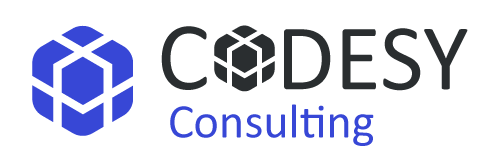
A staffing model is crucial for your business if you want to utilize its resources to the fullest, streamline the hiring process, and recruit the best talent available in the market. An effective staffing model goes a long way in maintaining the standards necessary to fill your staffing needs.
The model helps the HR department define a roadmap that clearly indicates their future staffing goals and ways to achieve them. Organizations can utilize the staffing model to recruit, sustain, and secure a skilled workforce essential for diverse projects, whether on a temporary or permanent basis.
If your company needs help hiring and retaining top talent, follow the steps outlined below to establish an effective staffing model.
What is a Staffing Model?
Staffing models, sometimes referred to as staffing plans, are collections of business data and reports that outline the cost of labor, the current staffing requirements, and how each employee functions within the organization. A few staffing model examples include the contingency staffing model, the internal staffing model, and the external staffing model.
The model is an excellent way to make sure that the company stays ready for both ongoing and upcoming projects and effectively steer clear of any negative HR-related situations. Most successful businesses nowadays follow the strategy of a staffing plan to gain maximum workforce benefits.
Types of Different Staffing Models
Staffing models can be categorized into five different types. Before you develop one, you should know how the five plans differ from one another and select the one that best fits the requirements of your business.
Full-Time Employees
The most valuable asset of any business, full-time employees, are hired on long-term contracts, retained, and paid directly by the business. They play a significant role in handling company operations and are usually employed for critical positions in the company, for example, project managers and marketing specialists.
The full-time employee staffing model is the simplest as they are hired for projects requiring their skill set for an indefinite period. The hiring managers just need to keep an eye out for candidates who are outstanding team players and skillful experts in the field.
Staff Augmentation
If your business is one that often finds itself in need of employees to fill short-term positions or work on temporary projects, then you need to follow the staff augmentation staffing model. In this framework, individuals are recruited to collaborate within a team on ongoing projects until the desired goals are achieved.
One key thing to note is that employees are managed and compensated directly by the business in this model and not by an external organization. This model is especially good for companies that lack a particular skill on an ongoing project or may need extra labor to finish the task on time.
Professional Services (Consultants)
Professional service providers are individuals with extensive expertise in a specific subject, often engaged by businesses to offer guidance, insights, and recommendations on challenges faced by the business in that particular domain.
Consultants work on their own terms and are not directly managed by the businesses. They are only compensated for their work once their job is done, so you don’t have to spend time constantly managing a consultant.
Outsourcing
Outsourcing is an advantageous staffing model utilized by businesses that start out by providing new services or lack the bandwidth to handle their current projects. These companies contract out the work to outside service providers who employ a number of skilled professionals who competently complete the assigned tasks.
The outsourcing model enables companies to access a dedicated team of specialized professionals at a reduced cost, eliminating the necessity of hiring them as full-time staff. Furthermore, companies can avoid managing outsourced workers directly by working with managed service providers.
There are multiple types of outsourcing staffing models:
- Off-shore
- On-shore
- Near-shore
- On-site
Hybrid Model
The hybrid workforce staffing model is a mixture of all the models mentioned above. It combines elements of both in-house and outsourced resources to create a flexible and dynamic workforce. This approach allows companies to have a core team of internal employees while leveraging external expertise for specific projects or tasks.
In essence, the business uses multiple models simultaneously to gain maximum benefit and increase production. This is the ideal model for companies looking to hire people on a temporary basis with the intention of turning them into permanent employees if they closely meet the needs of the company.
How to Build an Effective Staffing Model?
An effective staffing model is created after careful consideration of several factors, including defining organizational goals, identifying challenges, prioritizing staff recruitment and retention, etc. Make sure to follow these steps to develop a foolproof workforce staffing model:
Define Organization Goals
The first step in establishing a staffing model for your organization consists of analyzing the organization’s goal in every aspect and prioritizing the future goals the company aims to achieve. From there onwards, you can move on to think about how the staffing plan being developed needs to be in line with the company’s needs,
Determining your goals for the upcoming year and assessing whether you plan to initiate a new business venture or revamp your existing business with fresh strategies helps you gain a clearer understanding of the proposed company objectives.
A few other questions you might need an answer to include:
- What are the most important goals for the upcoming year?
- Does the business need to reorganize or realign?
- How will human resource planning support the business’s strategies?
Analyze Current Business Standings
Once you get a clear idea of the course your company should take, you must begin assessing where your organization currently stands regarding staffing gaps. This analysis will aid you in understanding the points to prioritize in your staffing plan and ultimately hire the right people for the company.
This can be an abstract analysis that covers various domains such as employee skills, staff availability, staff retention rate, current resources, organizational chart, etc.
Identify the Difficulties You May Face
Before proceeding further in developing the plan, it is best to be prepared in advance for the challenges you may face along the way. Several factors may affect or interfere with the plan, including things that are sometimes beyond the organization’s control. These may include changes in laws, market trends, availability of skills, etc.
Therefore, analyzing difficulties in advance is crucial to evaluate the situations you will face when the plan is designed and executed. It also makes the hiring process more smooth-sailing.
Evaluate Current Staff
It’s beneficial to assess the skills and knowledge of your existing resources to gain insight into your current staffing needs. In order to conduct the analysis, you will need to gather data on your organization’s current resources, including their skills, experience, roles, responsibilities, individual competencies, and the projects they are currently involved in.
The evaluation may also lead you to know what’s missing in your current staffing plan so you can fill the gap in the future. The organization may be missing a particular skill, specific process, or a system.
Hire the Staff
The most crucial stage is the employee recruitment. The company may need to devise new and clever methods to hire the best resources in the market. For this, they may also have to conduct a study on the current market trends.
Once the desired candidates are filtered out, it is essential that the recruitment and onboarding process is carried out according to the staffing plan. For instance, if the company wishes to employ staff augmentation services, it must create a contract that precisely follows the staffing plan once the best candidates have been chosen.
Focus on Staff Retention
A key component of the staffing plan is staff retention because it is not enough to simply hire new employees if they are not given the necessary support to stay on staff. To help employees embrace the organization’s work culture, they must be provided with flexible work arrangements, healthy work-life balance, and career growth opportunities.
If the company follows this holistic approach, then the staff will want to continue rendering their services to the company.
Important Tips and Tools for Building a Staffing Model
- A key component of creating a staffing model for an organization is strategically planning your course of action. This allows you to be both creative in your thinking and adhere to the standards and guidelines that must be followed.
- Make your plan dynamic and update it according to the changing organizational needs. Utilize advanced software tools, conduct training programs, and optimize the hiring process to yield maximum benefits.
- Use tools such as checklists and forms, shift schedulers, and availability checkers to organize and update info regarding employees in real time.
- Focus on finding skill gaps in your current workforce so that those can be filled or eliminated by an advanced, more skilled workforce.
- Examine the difficulties the business currently faces in each area and the obstacles it has previously encountered when creating a staffing model.
How Does a Staffing Model Benefit Your Business?
Implementing a carefully crafted staffing model yields several benefits for the business. It ensures that every business resource is used effectively, maximizing productivity while remaining as close to the company’s objectives as feasible.
Moreover, a company using a flexible staffing model can adjust to shifting conditions, such as shifts in project requirements, market conditions, or demand. It allows the organization to grow or contract without experiencing significant disruptions.
Lastly, having a well-structured staffing model can mitigate risks associated with sudden changes in the workforce, such as resignations or unexpected increases in workload.
The Challenges Involved in Establishing a Staffing Model
Establishing a staffing model for your business is a complex task, as you have to consider multiple factors before reaching a decision. It is recommended that this model is derived after exhaustive discussions and considerations to avoid future problems.
One major challenge that organizations face is eliciting and accurately forecasting the workforce needs. A lack of knowledge about the business requirements, ongoing projects, or planned projects may lead to inaccurate decision-making. It is essential to keep track of the company’s needs to avoid overstaffing and understaffing.
Another difficulty that several businesses encounter in establishing a staffing model is investing time and resources in filtering out the best talent in the market. To understand the labor market, a business may need to go in-depth about current rates, trends, etc, which is a commitment that only a few businesses are willing to make.
Lastly, it is a major challenge to ensure that the staffing plan developed aligns with the company goals and will prove to be worthwhile in the future. Therefore, it is necessary to prioritize the development of the plan in a suitable manner.
Should You Worry About Setting Up a Staffing Model for Your Organization?
Organizing your actions concerning business operations helps streamline the entire process and produces favorable outcomes. So, whether you work in the IT industry or any other, creating an effective workforce staffing model is bound to help you fulfill your business needs efficiently.
Before diving into the processes involved in drafting a plan, you must choose the right type of staffing model that suits your business. For businesses operating in the IT sector, we recommend opting for staff augmentation services as they serve their purpose well without involving extra overhead or extra compensations.
However, the model you choose must accurately reflect your business goals. After overcoming the challenges in drafting the plan, execute it and keep track of the results. If the plan was devised using valid methods, your company is on its way to success!





